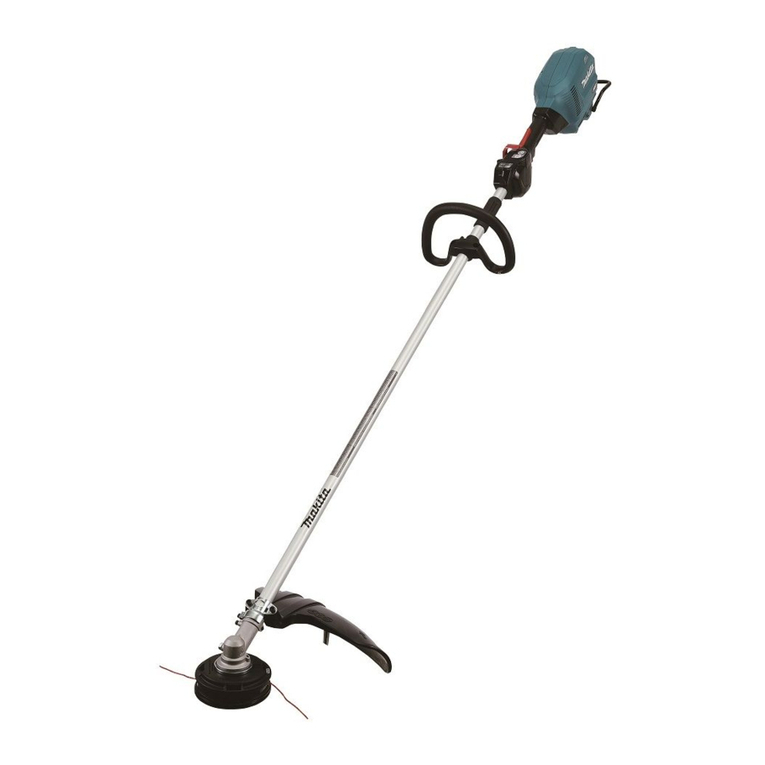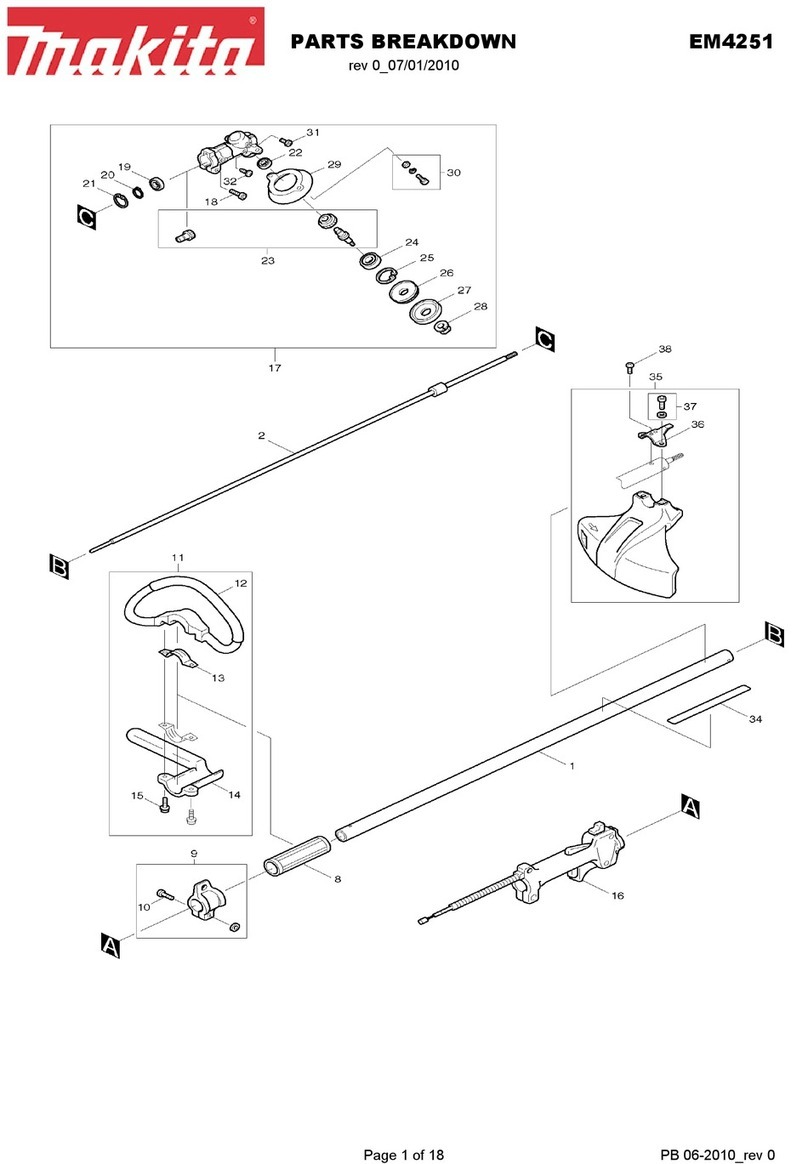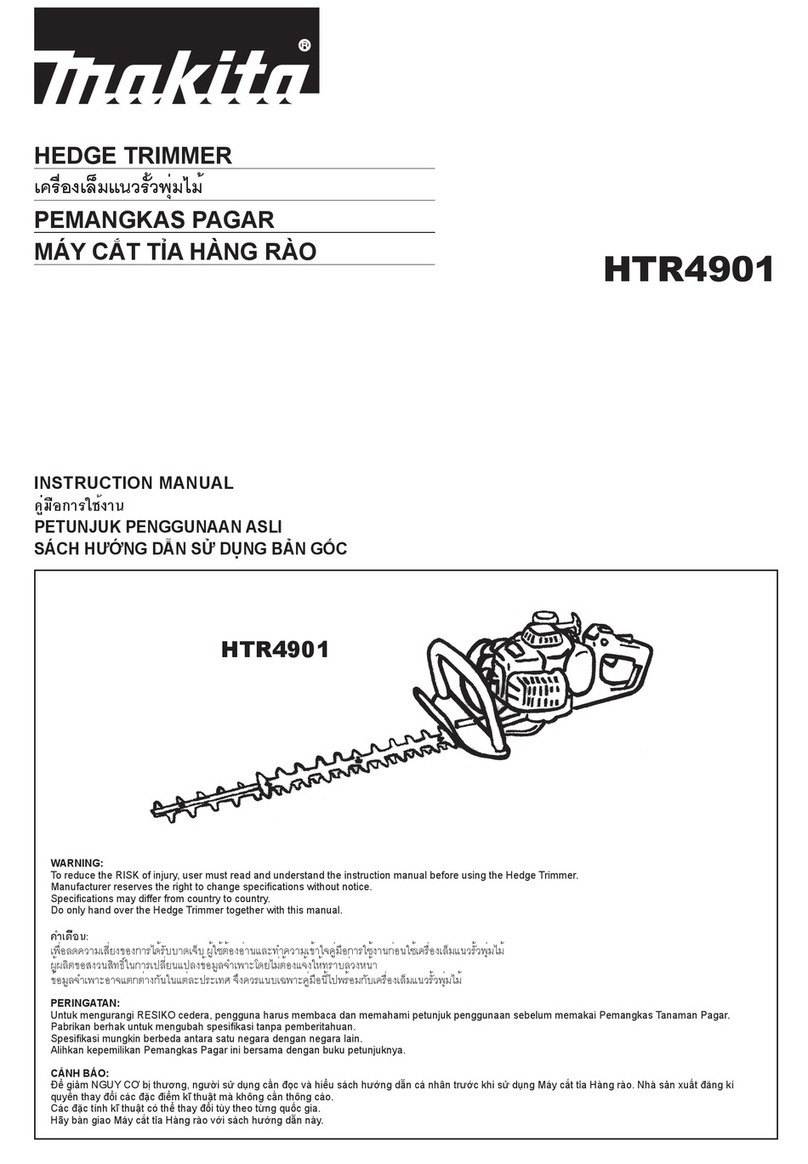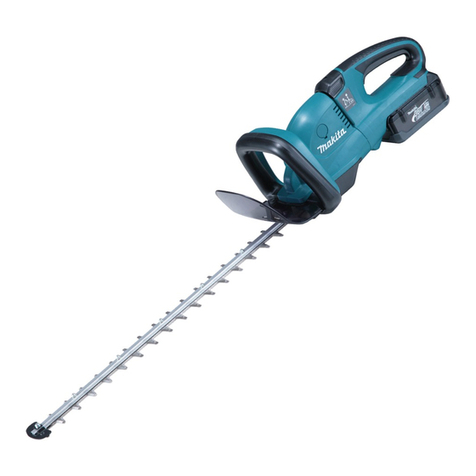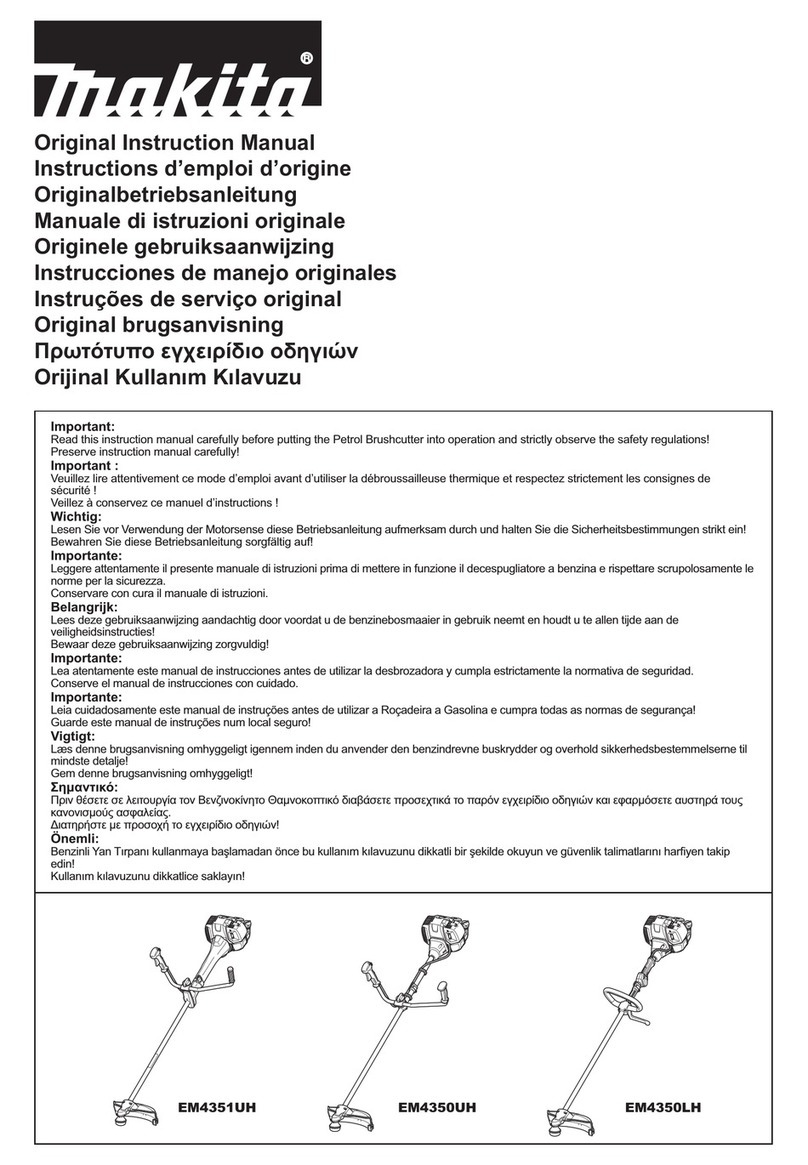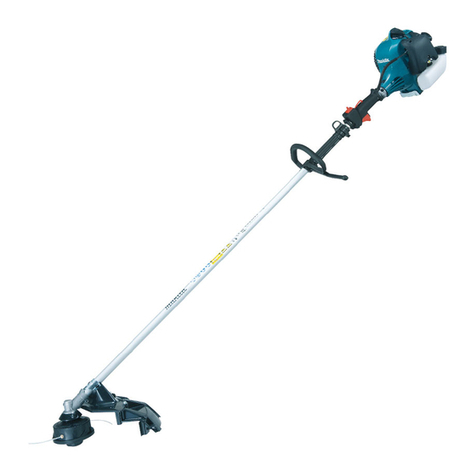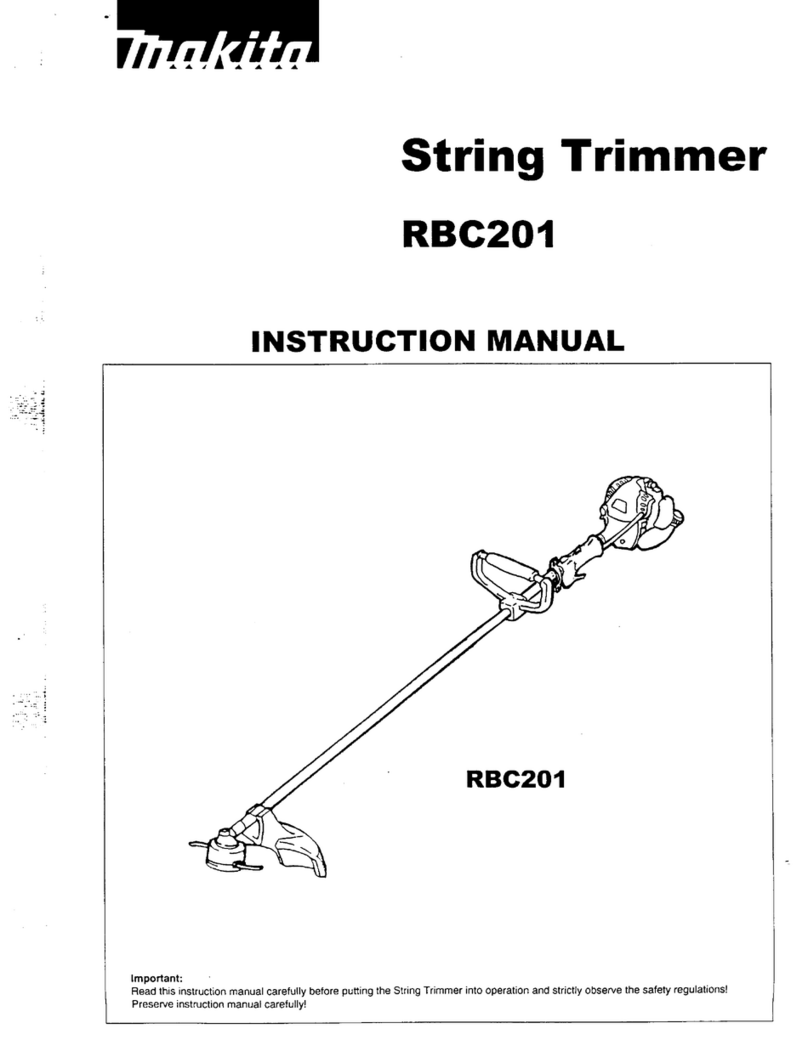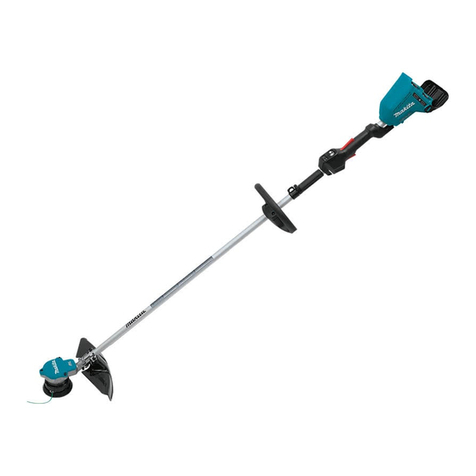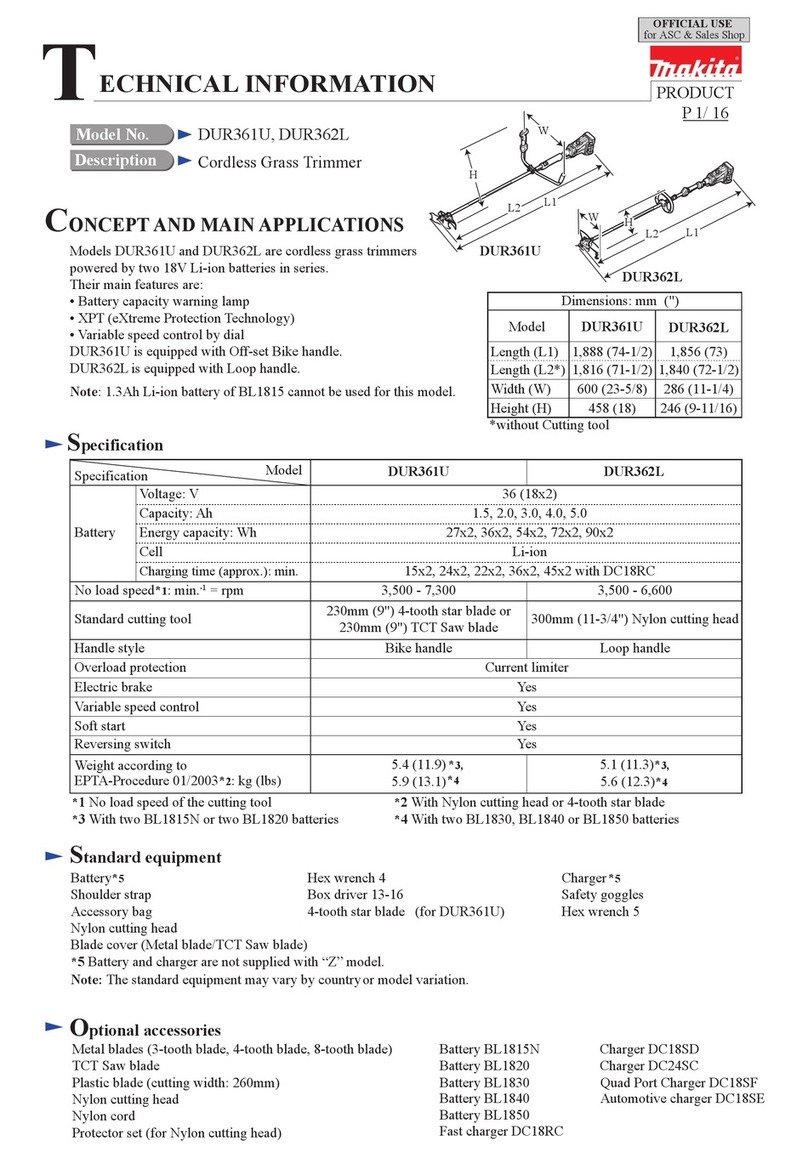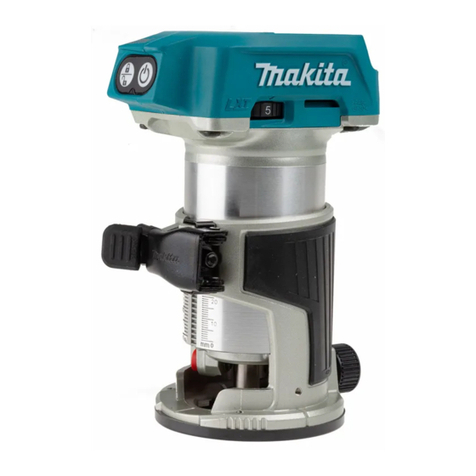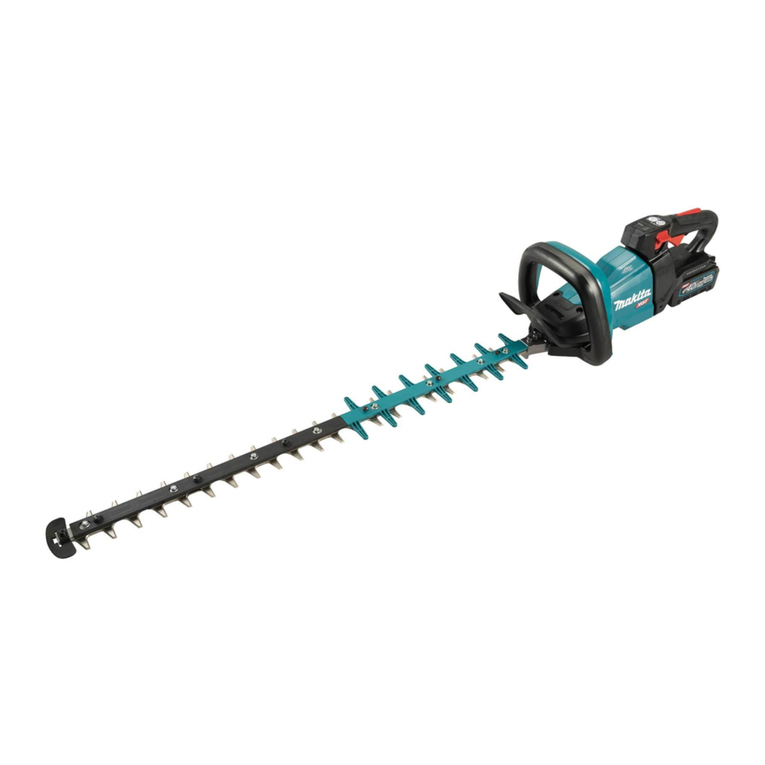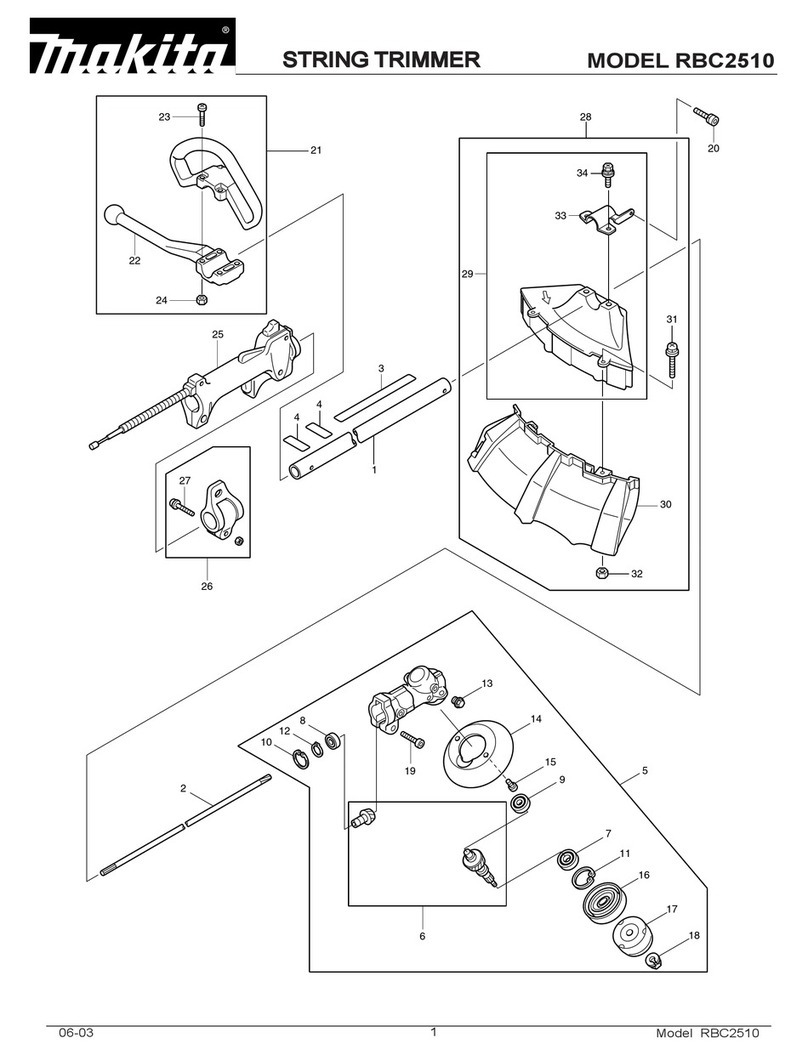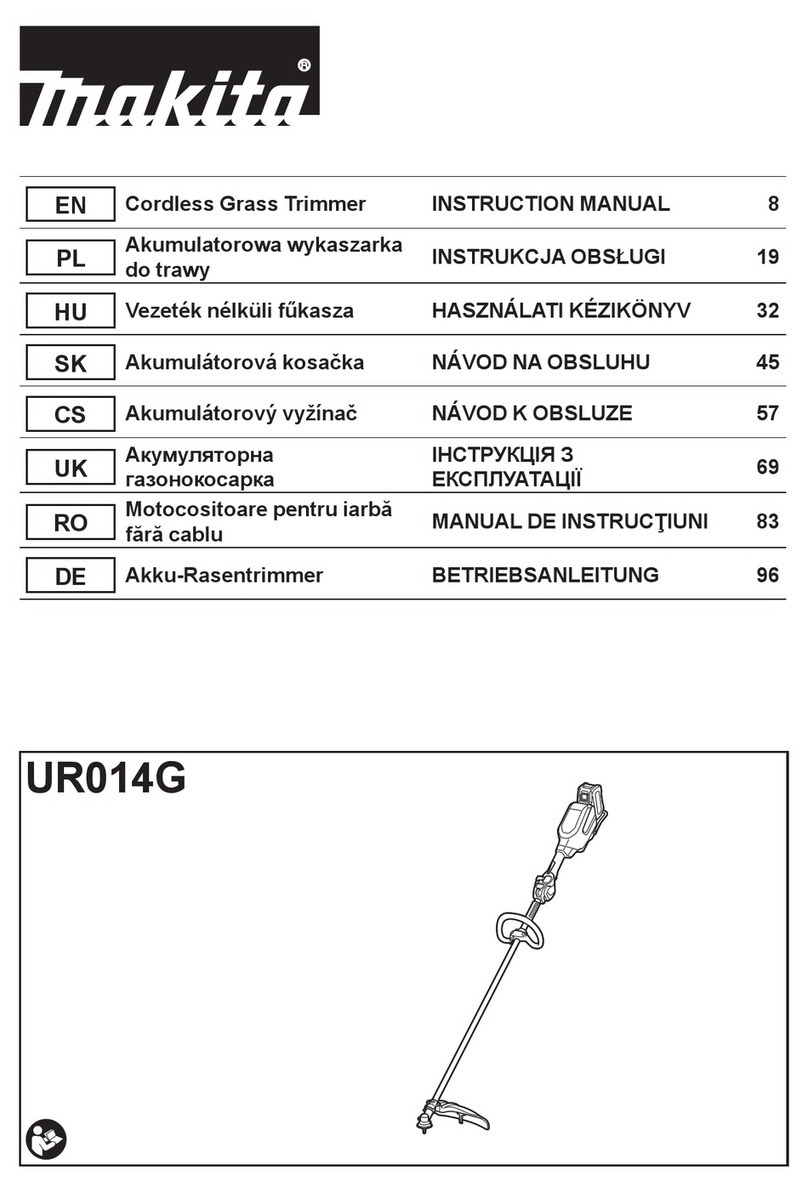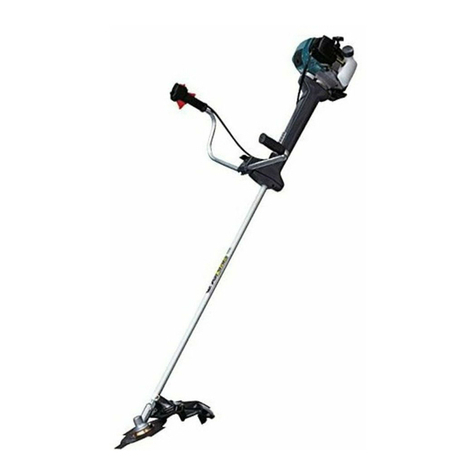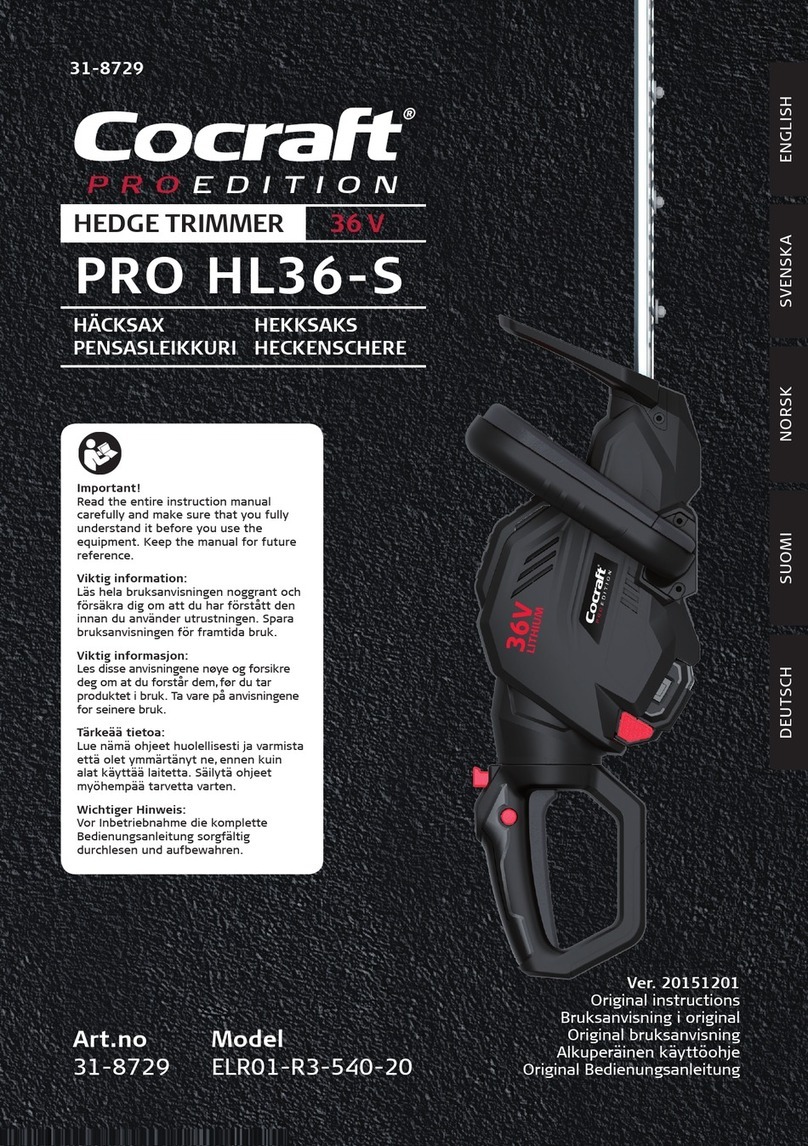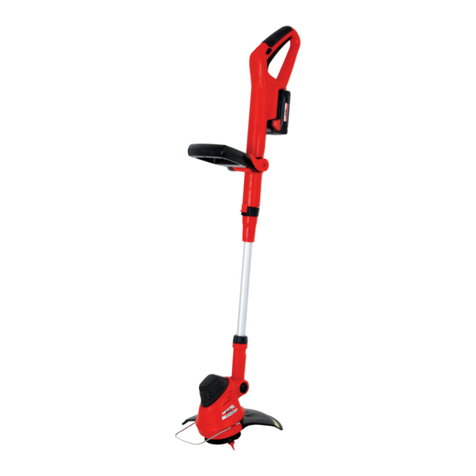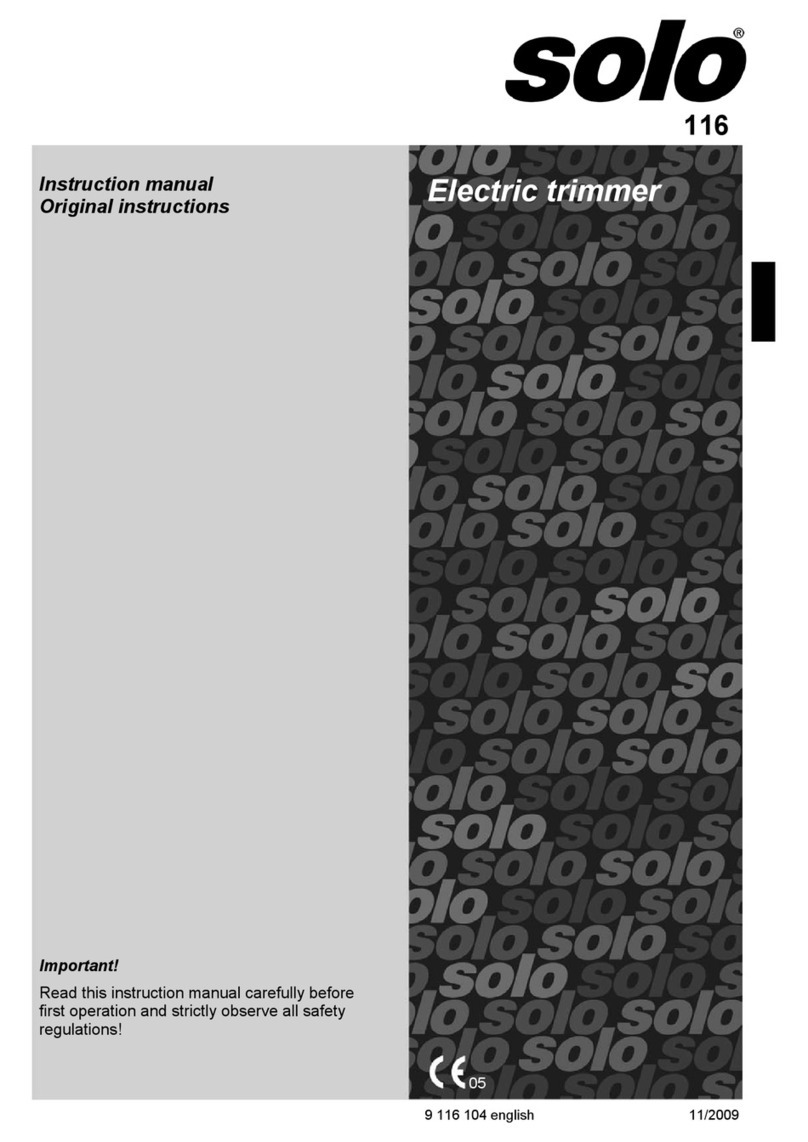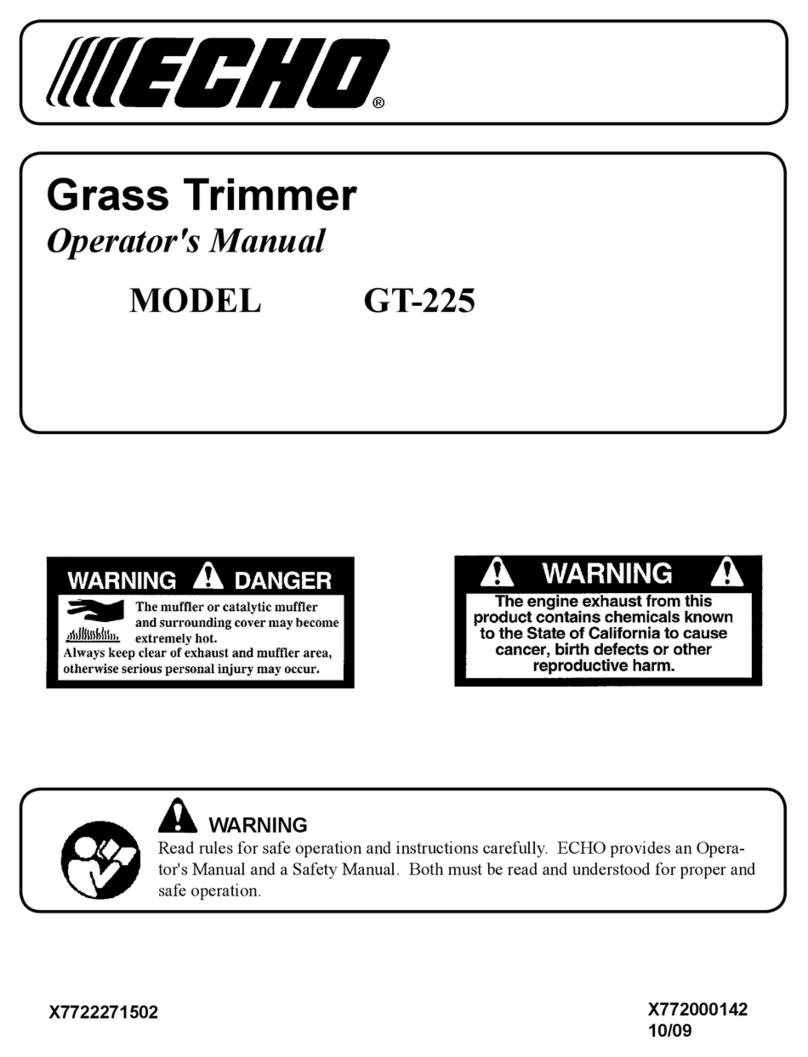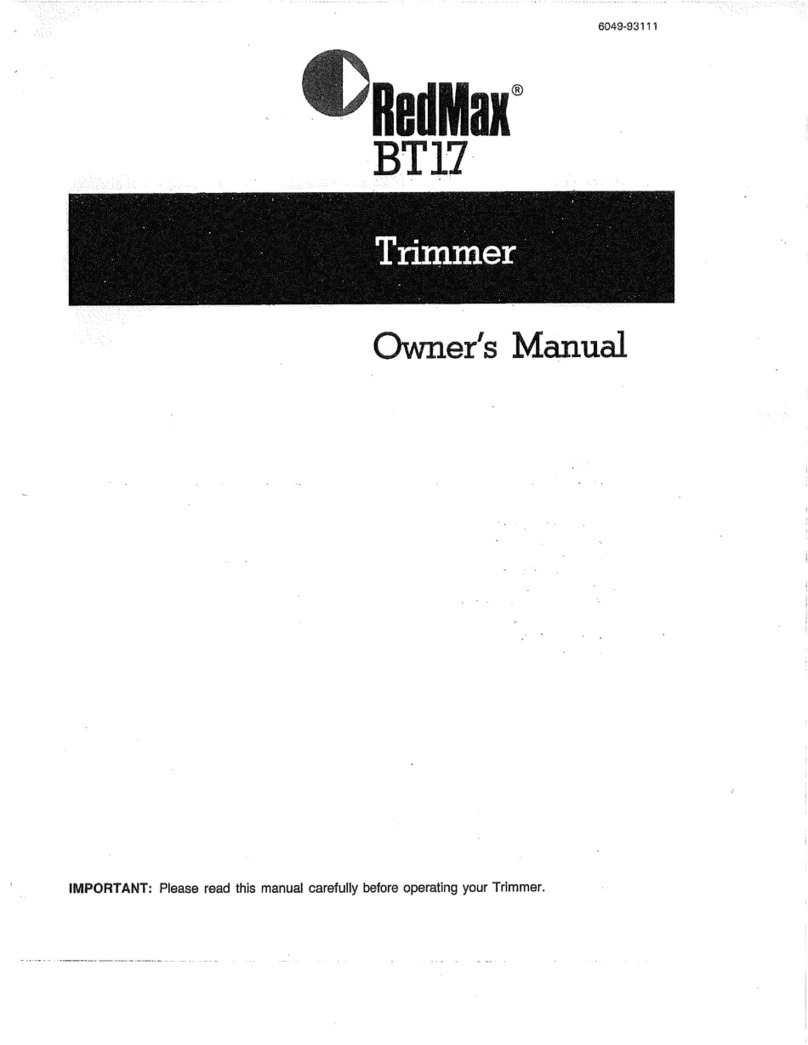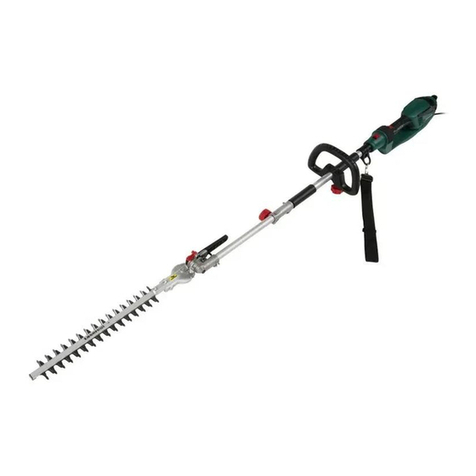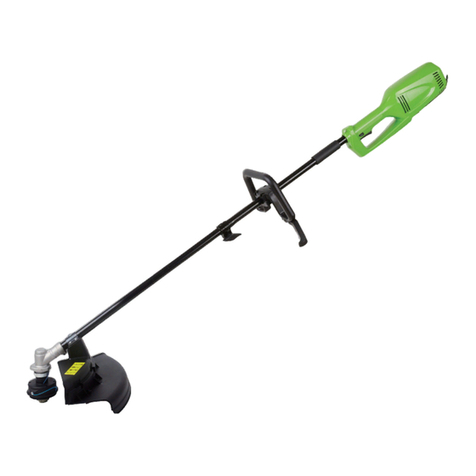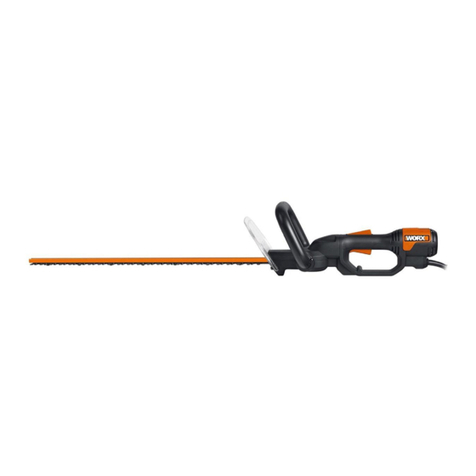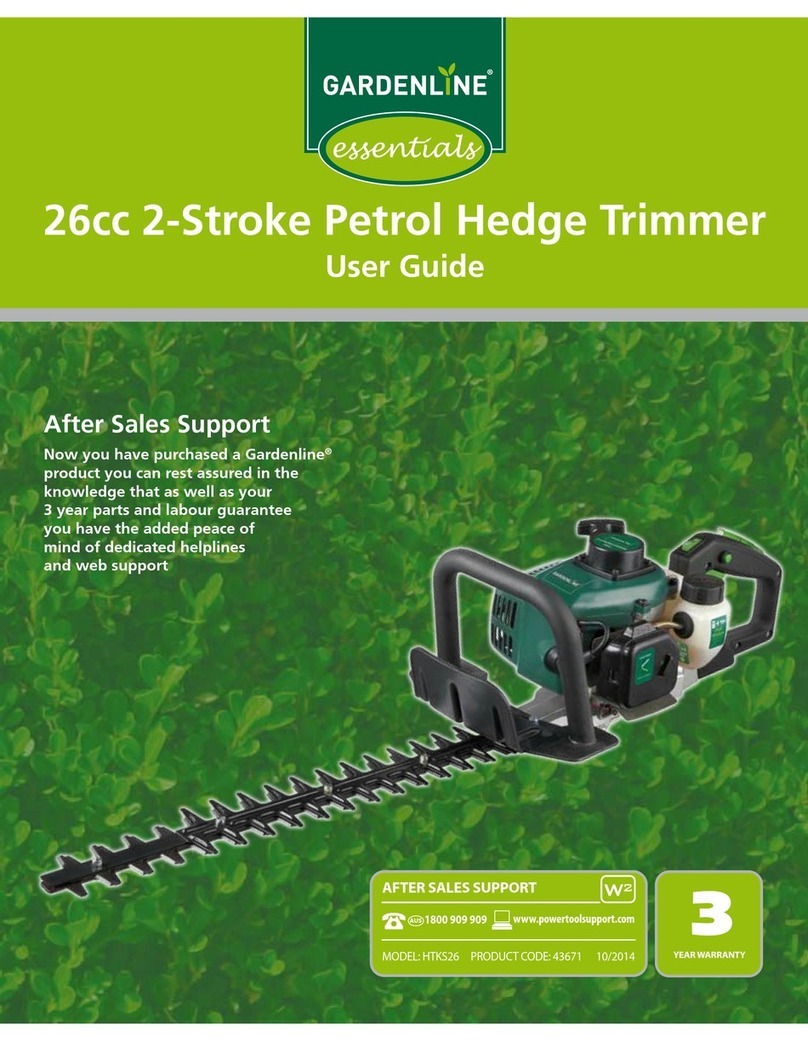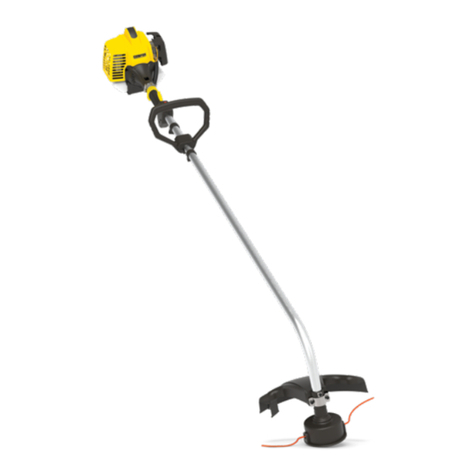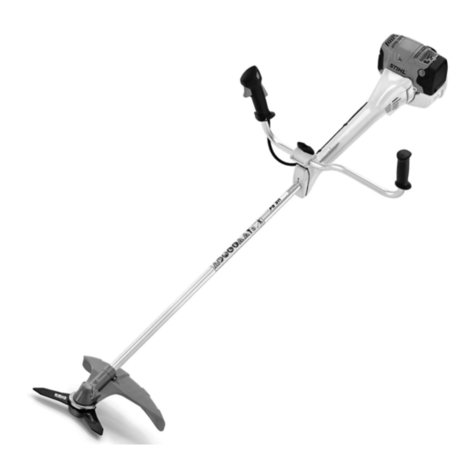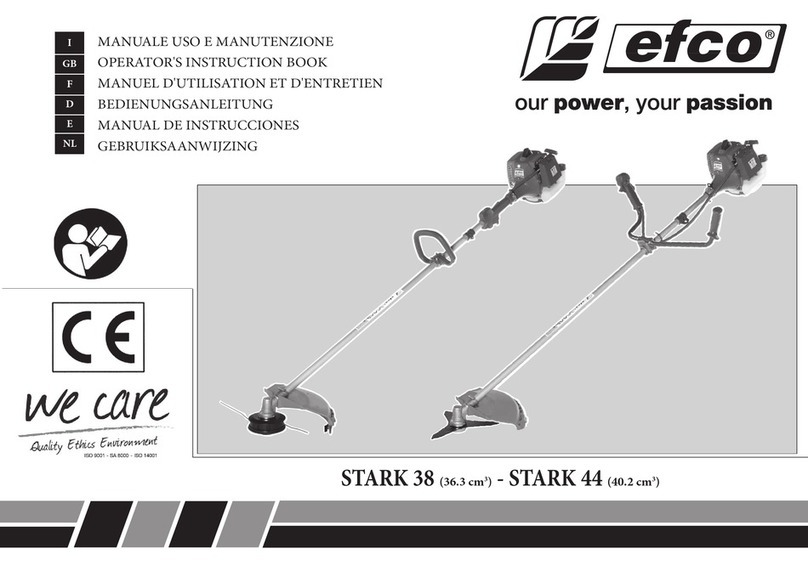
4
Starting the Pole Hedge Trimmer
- At all times allow a 15-meter diameter safety zone around the working area.
Make sure that all persons (in particular children) and/or animals remain outside
this zone. In general, avoid using the hedge trimmer whenever people (in
particular children) are nearby.
- Before starting the Pole Hedge Trimmer, always make sure that the machine is in
safe operational condition.
- Check the operation of the throttle lever safety mechanism. The lock-off lever
should have a smooth and easy action. Make sure that the lock-off lever
functions properly. Check that the handles are clean and dry and test the STOP
switch to ensure that it is functioning properly.
Always start the pole hedge trimmer in accordance with the directions provided in
this instruction manual.
Follow the instructions below to start the pole hedge trimmer
- Start the pole hedge trimmer only after the machine has been completely
assembled and all accessory parts have been attached.
- Before starting the engine, make sure that cutter blades are not obstructed by
any foreign objects such as stones, branches, etc.
- Stop the engine immediately if engine problems occur.
- When operating the pole hedge trimmer, always maintain a firm grip on both
handles. Wrap your fingers tightly around each handle, cradling the handle
between thumb and forefinger. To keep the pole hedge trimmer under control at
all times, avoid changing your grip during operation. Make sure that the control
handles are in good condition and free of moisture, mud, oil or grease.
Always ensure secure and well-balanced footing
- Only use the pole hedge trimmer outdoors.
- Always stop the engine immediately and discontinue operation if engine trouble
occurs or if the machine starts making unusual noise.
- Exhaust fumes are poisonous. Never operate the machine in an enclosed room
or tunnel without ventilation (risk of suffocation and gas poisoning). Note that
carbon monoxide is an odorless gas. Always make sure that areas where the
engine is operated are adequately ventilated.
- Stop the engine when resting, or when the pole hedge trimmer is left
unattended. Place the machine in a safe location and make sure that no
combustible material is nearby.
- Never place a hot hedge trimmer onto dry grass or combustible material.
- To reduce the risk of fire, keep the engine and muffler free of debris, leaves or
excessive lubricant.
- Never operate the engine if the muffler is malfunctioning.
- Turn off the engine before transportation.
- Always stop the engine in the following circumstances. When:
•Resting
•Transporting the machine
•Cleaning the machine
•Refueling the machine
•Performing maintenance on the machine
•Fixing a problem with the machine
- When transporting the machine in a vehicle, always securely attach the pole
hedge trimmer to avoid leakage of residual fuel.
- Always empty the fuel tank before transporting the pole hedge trimmer in a
vehicle.
- When unloading the machine from a vehicle, take extra care not to drop the pole
hedge trimmer to the ground, as this may seriously damage the fuel tank.
- Except in an emergency, never drop the pole hedge trimmer as this may
seriously damage the machine.
- When transporting the pole hedge trimmer, always lift the machine completely off
of the ground. Never drag the engine across the ground as this may damage the
fuel tank and possibly cause a fire.
- Always use the cutter cover provided to protect and secure the cutting section
of the pole hedge trimmer during transportation and storage.
•Resting
•Transporting the machine
•Cleaning the machine
•Refueling the machine
•Performing maintenance
on the machine
•Fixing a problem with
the machine
